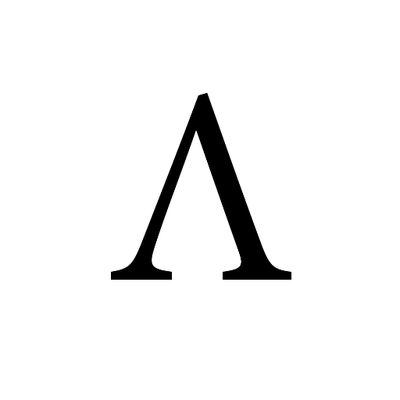
Cena ZKsyncZK
Konwerter ZK na PLN
Cena ZKsync w PLN na żywo dzisiaj
Czy uważasz, że cena ZKsync dziś wzrośnie czy spadnie?
ZKsync – dane rynkowe
Informacje o ZKsync (ZK)
Czym jest zkSync?
zkSync to rozwiązanie do skalowania warstwy 2 dla Ethereum, zaprojektowane w celu zwiększenia przepustowości transakcji w sieci i zmniejszenia opłat transakcyjnych przy jednoczesnym zachowaniu podstawowych wartości bezpieczeństwa i decentralizacji. Opracowana przez Matter Labs technologia zkSync zero-knowledge rollup (zk-rollup) ma na celu sprostanie wyzwaniom związanym ze skalowalnością Ethereum.
Ethereum, drugi co do wielkości blockchain na świecie, boryka się z problemami skalowalności i wysokimi opłatami transakcyjnymi, szczególnie w okresach wysokiej aktywności sieci. zkSync ma na celu rozwiązanie tych problemów poprzez agregowanie wielu transakcji poza łańcuchem i przesyłanie pojedynczego dowodu do blockchaina Ethereum, znacznie zmniejszając obciążenie obliczeniowe i związane z tym koszty. W rezultacie zkSync jest kluczowym osiągnięciem w trwających wysiłkach na rzecz skutecznego i zrównoważonego skalowania Ethereum.
Materiały dodatkowe
Oficjalne dokumenty: https://docs.zksync.io/
Oficjalna strona internetowa: https://zksync.io/
Jak działa zkSync?
zkSync wykorzystuje technologię zk-rollup w celu poprawy wydajności sieci Ethereum. Zasadniczo zk-rollupy łączą setki transakcji poza łańcuchem, tworząc kryptograficzny dowód na to, że transakcje te są ważne. Dowód ten jest następnie przesyłany do mainnetu Ethereum w celu weryfikacji. Ponieważ tylko dowód musi zostać zweryfikowany w łańcuchu, proces ten znacznie zmniejsza obciążenie sieci Ethereum, prowadząc do niższych opłat za gaz i krótszych czasów transakcji.
Co więcej, zkSync został zaprojektowany tak, aby był kompatybilny z EVM (Ethereum Virtual Machine). Oznacza to, że deweloperzy mogą wdrażać istniejące smart kontrakty Ethereum na zkSync bez konieczności przepisywania kodu. Ta kompatybilność obniża barierę wejścia dla programistów i ułatwia płynną migrację zdecentralizowanych aplikacji (dApp-ów) do zkSync, promując w ten sposób szersze zastosowanie tego rozwiązania skalującego.
zkSync zawiera również natywną abstrakcję konta, która poprawia wrażenia użytkownika, umożliwiając bardziej intuicyjne i przyjazne dla użytkownika interakcje z blockchainem. Użytkownicy mogą zautomatyzować płatności, uiszczać opłaty za gaz w dowolnym tokenie, a nawet zlecić pokrycie tych opłat innym podmiotom. Ta elastyczność ma na celu sprawienie, że technologia blockchain będzie bardziej dostępna dla szerszego grona odbiorców, co dodatkowo zwiększy popularność zkSync.
Bezpieczeństwo to kolejny kluczowy aspekt zkSync. Protokół przechodzi szeroko zakrojone audyty i testy warunków skrajnych, aby zapewnić jego solidność. Dziedzicząc bezpieczeństwo mainnetu Ethereum i przynosząc dodatkowe warstwy ochrony, zkSync zapewnia wysoce bezpieczne środowisko dla różnych zastosowań blockchain, szczególnie tych w sektorze zdecentralizowanych finansów (DeFi).
Czym jest token ZK?
ZK to natywny token użytkowy i token zarządzania w ekosystemie zkSync. Odgrywa istotną rolę w utrzymaniu i usprawnianiu działania protokołu. Jednym z głównych zastosowań tokena ZK jest uiszczanie opłat transakcyjnych w sieci zkSync. Wykorzystanie tokenów ZK do opłat zapewnia niższe koszty w porównaniu do mainnetu Ethereum.
Poza opłatami transakcyjnymi, token ZK jest integralną częścią zdecentralizowanego modelu zarządzania zkSync. Posiadacze tokenów mogą uczestniczyć w kluczowych procesach decyzyjnych, głosując nad propozycjami, które mają wpływ na przyszły kierunek protokołu. To demokratyczne podejście zapewnia, że rozwój i ewolucja zkSync odzwierciedlają zbiorowe interesy społeczności.
Co więcej, token ZK zachęca do bezpieczeństwa sieci i uczestnictwa. Użytkownicy mogą stakować swoje tokeny ZK, aby wspierać infrastrukturę bezpieczeństwa sieci, zdobywając dodatkowe tokeny jako nagrody. Dodatkowo, dostawcy płynności w ekosystemie zkSync są nagradzani tokenami ZK, zapewniając wystarczającą płynność dla zdecentralizowanych giełd (DEX-ów) i innych działań finansowych na platformie. Całkowita podaż ZK wynosi 21 miliardów tokenów.
Czy zkSync to dobra inwestycja?
Inwestowanie w jakąkolwiek kryptowalutę, w tym w zkSync, wymaga dokładnej analizy i starannego researchu. Zmienny charakter rynku kryptowalut oznacza, że ceny mogą ulegać znacznym wahaniom w krótkich okresach. Przed dokonaniem inwestycji ważne jest, aby zrozumieć dynamikę rynku, ocenić swoją tolerancję na ryzyko i rozważyć potencjał zarówno zysków, jak i strat. Śledzenie trendów rynkowych i angażowanie się w społeczność krypto może pomóc określić, czy zkSync jest dobrą inwestycją w 2024 roku.
Dodatkowo, dywersyfikacja jest kluczową strategią w zarządzaniu ryzykiem inwestycyjnym. Zamiast inwestować wszystkie środki w jedno aktywo, warto rozłożyć swoje inwestycje na różne kryptowaluty i aktywa tradycyjne. Takie podejście może pomóc złagodzić potencjalne straty i zapewnić bardziej zrównoważony portfel. Zawsze pozostawaj na bieżąco z dostępnymi informacjami i bądź przygotowany na dostosowanie swojej strategii inwestycyjnej w odpowiedzi na zmiany rynkowe, zapewniając, że Twój portfel pozostanie solidny i dobrze przygotowany na przyszłość.
Jak kupić zkSync (ZK)?
Rozważasz inwestycję w zkSync (ZK)? Wystarczą 2 minuty, aby założyć konto na Bitget i zacząć handlować ZK.
Powiązane artykuły o zkSync:
zkSync (ZK): Skalowanie Ethereum za pomocą Zero-Knowledge Proofs
Raport z analizy AI na temat ZKsync
Historia cen ZKsync (PLN)
 Najniższa cena
Najniższa cena Najwyższa cena
Najwyższa cena 
Jaka jest najwyższa cena ZKsync?
Jaka jest najniższa cena ZKsync?
Prognoza ceny ZKsync
Kiedy jest dobry moment na zakup ZK? Czy zalecane jest teraz kupno lub sprzedaż ZK?
Jaka będzie cena ZK w 2026?
Jaka będzie cena ZK w 2031?
Popularne promocje
Globalne ceny ZKsync
Jak kupić ZKsync(ZK)

Utwórz darmowe konto Bitget

Zweryfikuj swoje konto

Konwertuj ZK na PLN
Często zadawane pytania
Jaka jest aktualna cena ZKsync?
Jakie czynniki wpływają na cenę ZKsync?
Gdzie mogę kupić ZKsync?
Czy ZKsync to dobra inwestycja długoterminowa?
Jaka była cena ZKsync miesiąc temu?
Jakie są prognozy cen dla ZKsync w następnym roku?
Jak cena ZKsync ma się do Ethereum?
Czy cena ZKsync była stabilna w ostatnich miesiącach?
Co wpłynie na cenę ZKsync w przyszłości?
Jak mogę śledzić wahania cen ZKsync?
Jaka jest obecna cena ZKsync?
Czym jest 24-godzinny wolumen obrotu ZKsync?
Jaka jest najwyższa dotychczasowa wartość ZKsync?
Czy mogę kupić ZKsync na Bitget?
Czy mogę uzyskać stały dochód z inwestycji w ZKsync?
Gdzie mogę kupić ZKsync z najniższą opłatą?
Ceny powiązanych kryptowalut
Gdzie mogę kupić ZKsync (ZK)?
Sekcja wideo — szybka weryfikacja, szybki handel

Konwerter ZK na PLN
ZK – źródła
Bitget Insights





Handluj
Earn
ZKJ/USDT
SpotZKJ/USDT
Depozyt zabezpieczającyZKJ/USDT
Kontrakty futures zabezpieczone USDTCeny nowo notowanych monet na Bitget








